See the Deep Sea
Published by Ocean Conservancy
Do you ever wonder what happens at the bottom of the ocean? Well, NOAA’s Ship Okeanos Explorer has been exploring the mysterious deep-sea areas along the southeastern U.S. Coast for the past three weeks. With the incredible livestream from their remotely operated vehicles (ROVs), we’ve been able to take a deep dive right along with them.
The deep-sea areas explored in this expedition are some of the least explored places along the U.S. East Coast. Data was collected in the waters off Florida, Georgia, South Carolina and North Carolina. As one of the most climate-sensitive regions of the nation, the Southeastern U.S. has a lot to gain from insights through these explorations. A better understanding of these habitats will also foster better management and sustainability of ocean resources. One ROV dive came across a beer can at the bottom of the sea – an important reminder to join the fight against marine debris!
This isn’t the first time NOAA has come across fascinating creatures and underwater features. NOAA ships and ocean exploration partners funded by NOAA are continuously making new discoveries and contributing critical information about our ocean. These are shining examples of why NOAA funding is such an important issue in Congress.
Here are ten incredible finds from Okeanos’ recent deep-sea dives. The first is one that scientists on the team have called a once in a lifetime event.
Feeding Frenzy, Part I


Off the coast of South Carolina, the team came across a feeding frenzy of at least 11 sharks (deemed potentially dogfish) circling around a recently dead swordfish.
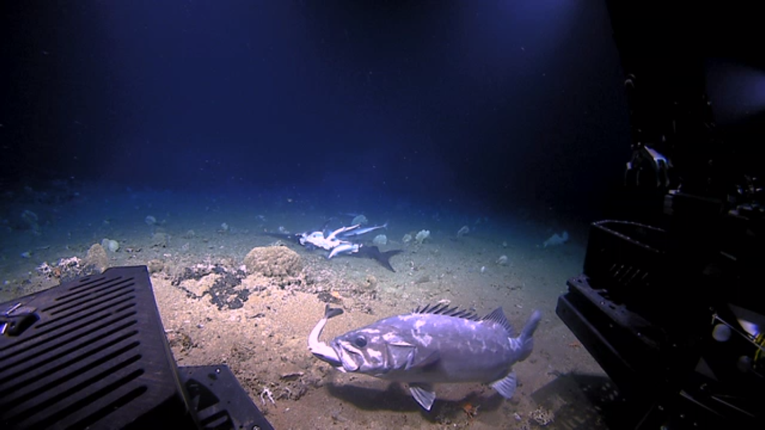

A large wreckfish then swooped in and swallowed one of the sharks whole!
Feeding Frenzy, Part II
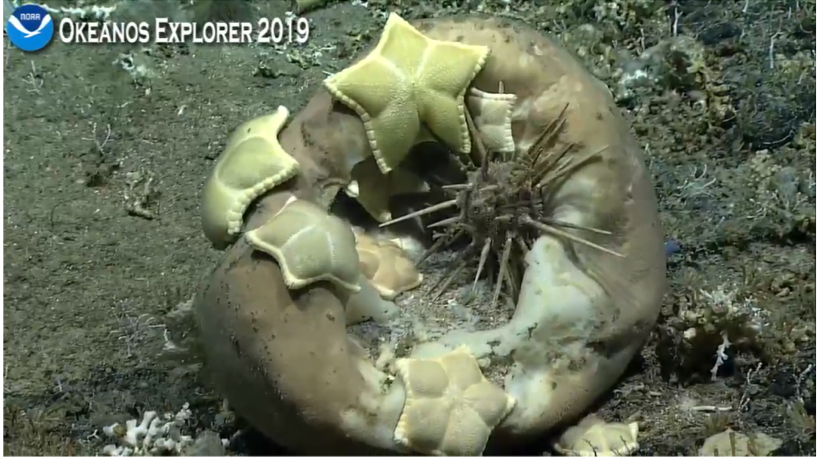

This crazy feeding frenzy features sea stars and a sea urchin on a sponge! The light yellow sea stars are known as “cookie” or “ravioli” star. The species has been known since 1884, but their biology is still largely unknown.
Protective Octopus Mom
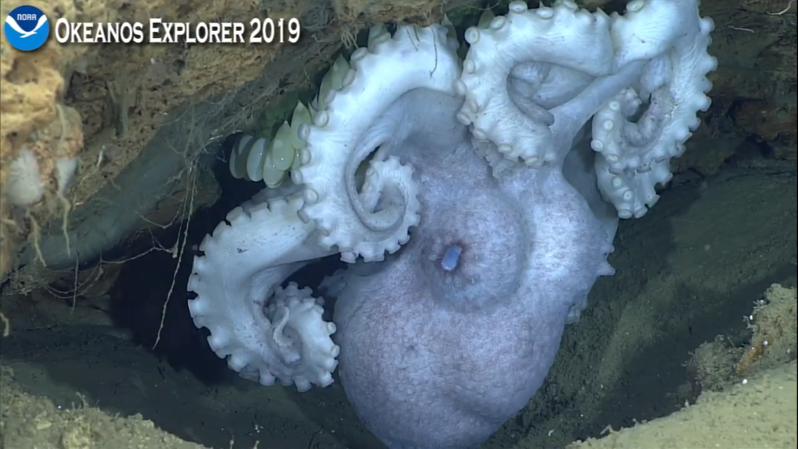

An octopus protecting her egg sacs on the overhang. The eggs are not well developed because you cannot see the eyes in the eggs, so the female will be sitting here for years (as far as we know).
A Toothy Deepsea Lizardfish
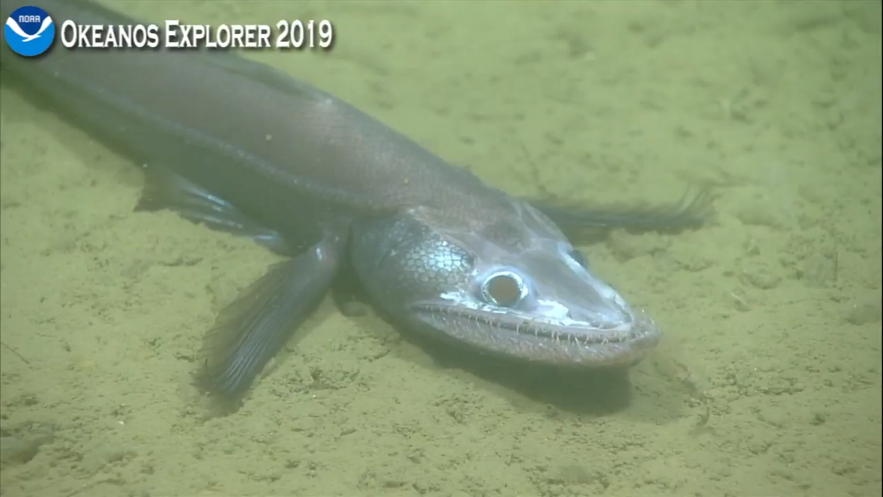

This Deepsea Lizardfish eats anything it meets, including members of its own kind.
The frightening, razor-sharp fangs are not only found on the jaw, but also on its tongue!
A Sponge-Carrying Crab
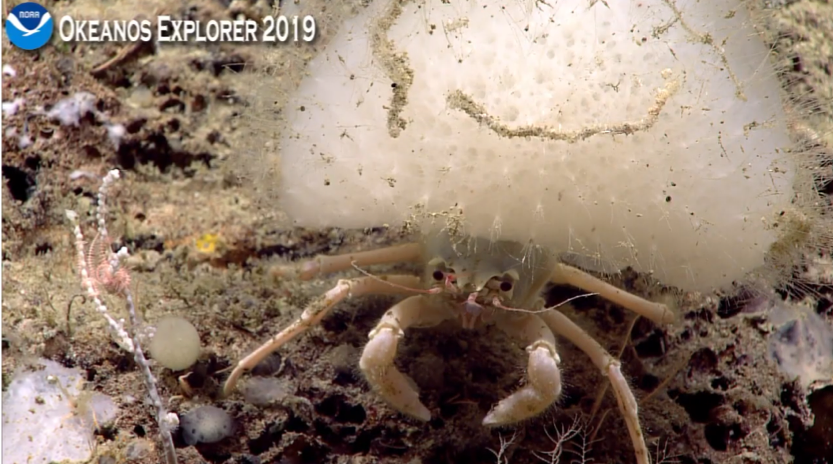

This hermit crab is carrying a glass sponge on its back for camouflage and protection in the deep sea.
The sponge’s sharp spicules can turn away predators. It uses the back pair of legs to hold the sponge over their carapace, or hard exoskeleton.
A “Pancake” Urchin
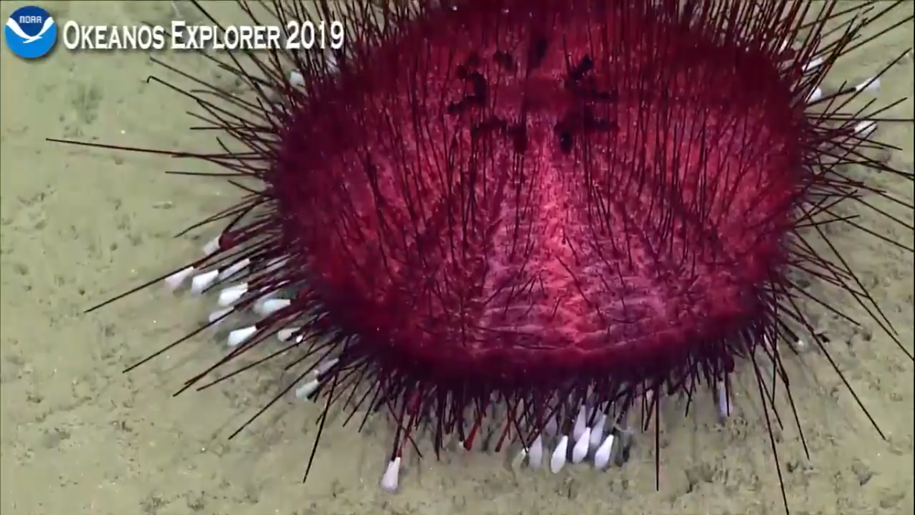

This “pancake” urchin uses its white-tipped spines, or feelers, to glide across the surface. Slow and steady, they leave little foot holes in the ground where they’ve traveled. There are sacs on the ends of some of their spines that are poisonous.
Sea Spider and Octopus
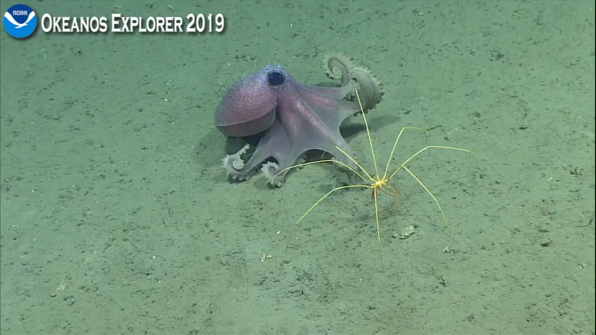



This sea spider is cohabitating and touching legs with an octopus. The octopus’s nickname is warty octopus because of the cartilaginous bumps on its body. You can see the lights of ROV Deep Discoverer reflected in its eye!
Hungry Sea Star
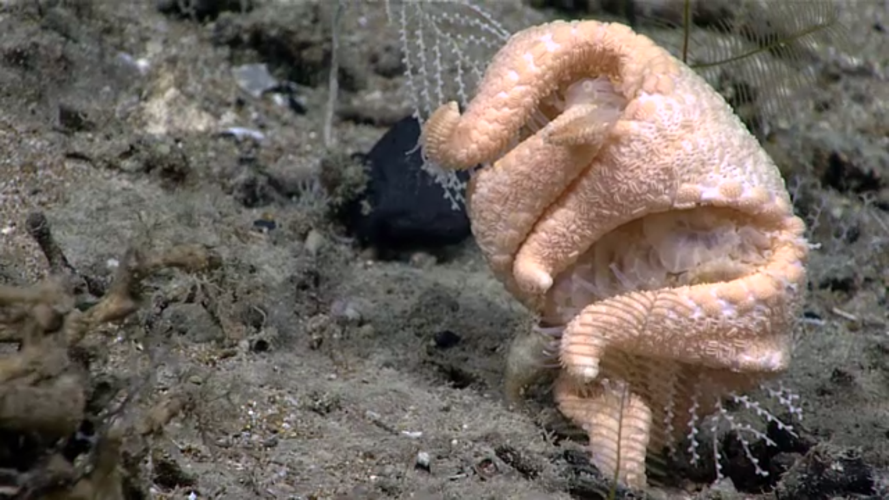

A sea star wrapped around and feeding on a primnoid octocoral. This is the first time it has ever been seen alive and we now have solid evidence that it is indeed a coral predator! It could be feeding for hours, days, or even months.
Invisible Skate
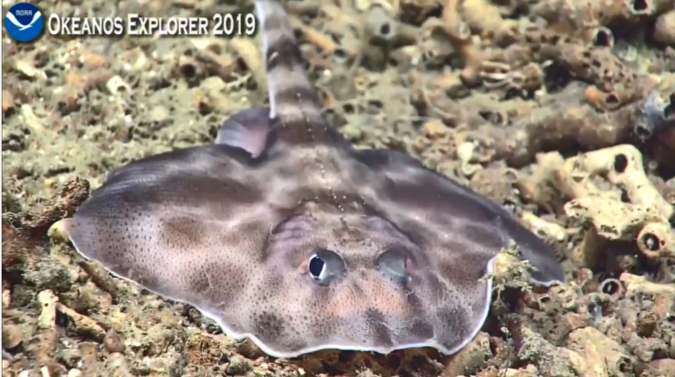

This skate employs “disruptive camouflage” as the spots break up its outline and makes it blend into the background. The lack of light in the deep ocean helps to make this method more effective.
Grump Sea Toad Fish


This ‘sea toad’ fish “has a bad case of the Mondays.” Sea toads have a small lure that hangs onto a depression between their eyes to attract small animals for food. We do not know yet how these lures are actually used.
A big congratulations to the Okeanos team for this successful expedition and all its awesome finds. Follow along as they continue the Nautilus expedition along the West Coast of the U.S. and in the Central Pacific. These discoveries and the important data collection that NOAA ships accomplish are essential to furthering our understanding of the most mysterious place on earth. None of this would be possible without funding for NOAA!
Sign up for our emails!
The post See the Deep Sea appeared first on Ocean Conservancy.
Read the full article at: https://oceanconservancy.org/blog/2019/07/15/see-deep-sea/


